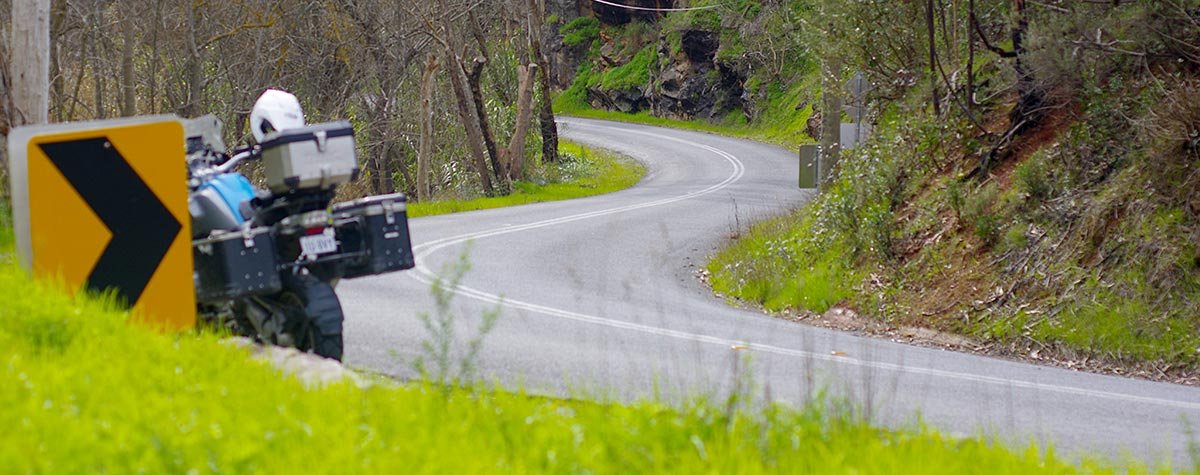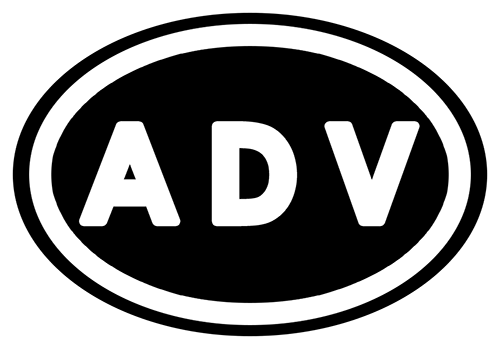ADVICE AND INFORMATION
Whilst we don't claim to have visited absolutely every inch of New Zealand, we've seen more than our fair share. We've ridden the highways, rattled along the tracks, powered along the coastlines, ranged up the mountains, slipped through the valleys and roamed deep into the heart.
The information provided here is intended to give you some knowledge to help you stay safe as you explore New Zealand and of course, we're always available to answer any questions that you might have.
We also have a FREE PDF GUIDE to touring New Zealand on two wheels which you can download here.
ADVICE AND INFORMATION:
-
GENERAL ADVICE
-
BIKE SETUP
-
DOCUMENTS
-
INSURANCE
-
SECURITY BOND & EXCESS EXPLAINED
-
GPS, SAT-NAV AND DIGITAL MAPS
-
LUGGAGE TRANSPORT
-
CANCELLATION POLICY EXPLAINED
-
GUIDE TO TOURING NEW ZEALAND (PDF DOWNLOAD)
-
BOOKING TERMS & CONDITIONS
The information you find here is written for you, to give a rough idea of what you might be reasonably confident on experiencing in New Zealand. Forewarned is forearmed so the saying goes!
The information should be useful for short and long term rides, but is orientated towards a trip planned mostly around camping, motels and hostels. Some of the advice may make you wonder what on earth you are letting yourself in for, but in reality you’ll be safe if you take a few precautions and use some common sense!
A good book on touring New Zealand will help you get the most out of your trip. It will tell you about tourist destinations, what to expect when you get there, accommodation, places to eat and just about everything else. There are more titles than could possibly be mentioned here, covering all styles of travel. Pick the one that suits you best.

GENERAL ADVICE FOR RIDING IN NEW ZEALAND
The weather is never so miserable that there’s no point in going to New Zealand: there are things to see and do all year round. The warmer months (November to April) are busiest, especially during the school holidays from the 20th of December through to the end of January. Ski resort towns are obviously busier during the winter months. If you’re travelling during peak periods (especially the Christmas season) it’s best to book as far ahead as you can manage, as much of the good accommodation fills up and bikes become hard to come by. It’s probably more pleasant to visit either before or after this hectic period, when the weather is still warm and there aren’t as many other travellers around.
Accommodation:
New Zealand is extremely well prepared for the traveller and the summer months are perfect for the outdoors way of life. Campsites can be found almost everywhere and are mostly clean and well kept. You’ll pay anything from NZ$10-25 per day for a two man tent. National parks and other remote areas often have bush campsites available for use. These are generally well off the beaten track and provide useful basic facilities such as toilets and an area for a fire (always check fire restrictions before sparking anything up). These sites are great if you enjoy getting back to nature. You’ll find birds and animals all around and there’s nothing better than sitting round your fire cooking dinner, downing a beer and gazing up at more stars then you ever knew existed.
On those rainy, cold days (they do crop up occasionally) when some comfort is welcome then motels are a good choice and will cost NZ$180-250 per night. Backpacker hostels are also good value and make meeting other travellers easy, although depending on the facilities available you may find yourself sharing with some characters that like to stay up good and late! You can either sleep in a dorm with a number of others (generally around NZ$30-40 per night) or take a room on your own ( starting from about NZ$ 70 per night). Call if you are hoping to stay in a hostel as they can be very busy. There are many books with details of accommodation and a good one is invaluable; ‘Lonely Planet’ and the ‘Rough Guides’ are amongst the more popular.

Insects, flies and other annoyances:
Flies and mosquitoes can be aggravating at certain times of year in some areas. Insect repellent is a must. Even if you think there’s no chance of mosquitoes or sand flies, there may be some around and so have some to hand. Sand fly bites can itch badly and they are tiny insects that are difficult to see and so better safe than sorry!
Dangerous animals:
New Zealand is thankfully almost entirely free from venomous creatures, biting crawlies and other such unpleasant characters. You might run into the occasional Orc or Ring Wraith, but they tend to wander off elsewhere if you just ignore them.

PREPARATION BEFORE YOU LEAVE
Don’t forget to take your bike license, passport with visa (see https://www.immigration.govt.nz/new-zealand-visas), flight tickets, booking confirmations, credit cards and cash, travel books etc. We strongly recommend you obtain personal health and general travel insurance before you depart for New Zealand.
Documentation:
Don’t forget to take your bike license, passport with visa, flight tickets, booking confirmations, credit cards and cash, travel books etc. We strongly recommend you obtain personal health and general travel insurance before you depart for Australia.
Insurance:
It is vital that you obtain good travel insurance before arriving in New Zealand. It is important that you consider your own specific needs before selecting an insurance policy, but something which covers rental vehicle insurance excesses would be best. One such insurance provider can be found by following this link. You should check to make sure your chosen insurance policy covers your specific needs before purchasing.
Luggage on a bike:
The more you bring the heavier the bike will be and the more difficult it can be to handle, so think carefully about your list of items and minimise them wherever possible. The bikes often include panniers but you’ll probably need a rucksack (not with a frame), or large zip up duffel style bag as well. It’s always handy if the pack is waterproof too, just in case you encounter rain along the way. A small rucksack for everyday items is useful so that you don’t have to keep unstrapping everything to get at often used things like your camera.
Remember you will need to carry water and probably extra petrol at times (depending on how adventurous you’re feeling) if you take some of the more remote tracks. On top of that you’ll need room for your tent. Cargo net type bungees are good for keeping things in place, and you’ll need at least a couple of standard ones. It may be a luxury, but a cheap collapsible chair means you have somewhere to sit outside your tent when you’re eating. It’s much nicer than sitting on the ground and keeps you away from the ants! Packing items you want to stay completely dry in separate plastic bags inside the main pack, is always a sensible option too.

Clothing and footwear for riding:
New Zealand in summer (November to March) is usually warm and sunny but it can be changeable especially on the South Island and so you’ll need to cater for that. Summer riding gear works well and so an armoured jacket and pants (trousers) are ideal but take layers that you can put on and take off as needed. A good set of waterproofs is important too in case a cold front sweeps in.
Spring and Autumn often have lovely clear days but these will be cooler and the chance of rain is higher. Touring is no fun when you’re cold and wet, plus you’re much more likely to make mistakes. Once again layers are essential as is a good pair of biking gloves and liners.
Textile rather than leather riding gear is our preference but it depends on what you’ve got available of course and it will all serve the purpose.
Waterproof biking boots are ideal but can be cumbersome to walk in and take up luggage space. An alternative is a good pair of Gore-Tex walking boots. They aren’t as protective but are an option if needs must. An approved motorcycle helmet should be worn at all times when riding.
RIDING HINTS AND TIPS
Resting:
At some stage of your trip you’ll probably spend a long time holding the throttle in one place. It hurts after an hour or two and you should plan to stop and stretch regularly. Some ingenious devices have been invented to act as a cruise control for bikes, making use of various items such as radiator hoses over the bar end and throttle grip. It’s obviously very dangerous if your throttle sticks open so beware, we certainly wouldn’t recommend it that’s for sure! It also helps to develop a simple routine of stretches and muscle contractions if you’re trying to cover a lot of ground each day.
Falling asleep:
You’ll see signs all over New Zealand warning you of the consequences of falling asleep whilst driving. It is one of the biggest killers on the roads here, so if you feel drowsy don’t take chances. There are plenty of rest stops along all routes in New Zealand, so there are no excuses. Some places even offer free “driver reviver’ coffee stops. On top of all that, the scenery is so fantastic that you’ll be wanting to pull over and admire the views a lot anyway.
Animals and travelling at night:
The rule for travelling at night, dawn and dusk is simple – don’t! Animals are most active at these times and hitting anything on the road will hurt a lot (or worse) and almost certainly wreck your bike. Not a nice way to end a trip. You’ll need to be aware that sheep outnumber humans by quite a large factor in New Zealand and they’re not terribly good at reading the road conditions.
Sheep (and other livestock for that matter) can frequently be found wandering into the road, so keep a wary eye out at all times. A helmetful of mutton is no fun.
Roads, or possibly not:
For the most part New Zealand asphalt roads are in good shape and you can get to the majority of the tourist sites without leaving them. Many visitors want to see some of the less travelled routes and to do this you’ll drive on roads without the ‘black top’. The condition of these can vary dramatically and it’s worth asking locals/the police what to expect. Many of them require a 4WD car/camper or a dual purpose enduro type bike. If you’ve little or no experience off road just take your time and drive within your abilities at all times. Don’t try and be a hero. It’s just not worth the consequences of a nasty accident especially in a remote location.

Speeding:
The police are extremely rigorous when it comes to speeding. Mobile cameras are used in many cities and if you are just 2-3kph over the limit you’ll be in for a fine. This zero tolerance policy means that for the most part New Zealanders don’t speed.
Drink driving:
There was a day when distances were measured in the amount you could drink between two places. One town to the next might be a six-pack or a long journey could be a crate (24)! Those days have thankfully long gone and drink driving is just as socially unacceptable as it is in many other parts of the world. If you do then one large, typically New Zealand billboard I’ve seen sums you up…”If you drink and drive you must be a bloody idiot!” No expensive marketing man needed for that succinct slogan! If you’re drinking, leave the bike at the camp site or motel.
Water crossings:
Water crossings can be dangerous so don’t go rushing in. Look carefully and walk your route first. Check for large boulders and holes. It’s generally best to take your luggage off the bike if necessary and carry it across first. Push the bike through if it’s safer, rather than riding it and risking falling off and sucking water into the engine.
If you get stuck between two rivers the best thing to do may be to wait as levels go up very quickly but come down just as fast. You may be there for a day or two but that’s better than chancing your luck in the water. Plus of course, unless you’ve cleared it in advance, the bike depot won’t be too happy about you taking the rental bike for a paddle!

Petrol, oil and water:
Don’t take chances with these. In hot areas you’ll drink much more than you expect and if you reach the point where you are thirsty you’re not drinking enough. Plan for about 10 litres a day – more if you need it for cooking or if you intend to walk in the bush. Don’t rely on other travellers to have spare petrol, oil or water – they’ll need it for themselves! Plan your route carefully and check that you have plenty spare when you reach the next roadhouse or town. Be very careful if you intend to go into remote regions.
Planning your route and daily preparation:
Always take a detailed map especially if you’re in remote regions. In these areas talk to local authorities about your intended trip and always plan your route carefully, noting roadhouses and towns and work out the distances to cover. Be aware of possible wrong turns – it can literally save your life. Imagine travelling on a track when you unknowingly take a wrong turn. You reach the point where you don’t have sufficient fuel to return to civilisation before realising you’ve gone the wrong way. You may be stuck in a hostile (yet picturesque) environment for days before anyone comes along – if you’re lucky.
It’s no exaggeration to say that many have died making this kind of mistake. Remote trips are incredibly exhilarating but you must plan the distances and points of return properly. ALWAYS let others know (local police for example) your route and estimated time of arrival and be sure to check in as soon as you arrive. Buying or hiring an emergency radio or satellite beacon may be wise in very remote areas.
Tools and useful extras:
A toolkit is often included with the bike but there’s a couple of extras you might find handy. Firstly, always carry a good knife. You may only need it for opening beer bottles but it can also be put to many other uses. Another handy item is a tube of ‘liquid metal’ or similar, it cures to a solid and can be used to fill holes in sumps, repair petrol tanks etc. Interestingly, soap can be used to fill a hole in a petrol tank as fuel won’t dissolve it. Another useful quick fix is putting pepper into a holed radiator to stop the leak!
Breakdowns and punctures:
New Zealanders (Kiwis) are generally extremely friendly and will help if you’ve broken down and are really stuck. If on a long term hire bike then the toolkit and spares will cover spare levers, belts, inner tubes, clutch cables and the like helping to deal with many common problems.
Hopefully you’ve found this information useful and interesting. If you have any other questions about riding in New Zealand, the best places to go, times to visit and what bike to ride, just drop us a line. We’ll be happy to help!

